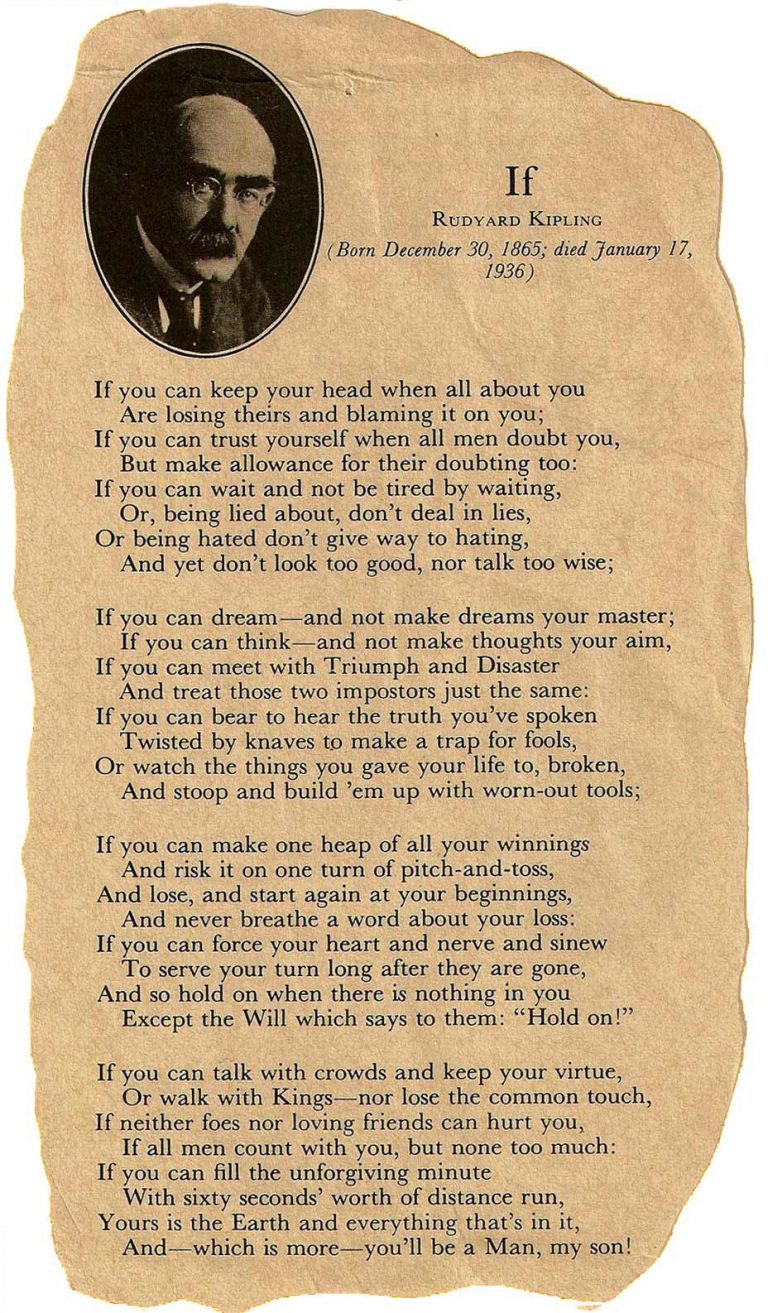


In the first stanza, the poem’s author says if his son keeps calm even everybody can’t, that if he can keep his reasoning when people around him cannot if he can be confident when others do not trust him if he can endure and be tough if he can handle being lied about but be sincere to himself, and being detested but not detest himself it doesn’t look handsome or have wisdom: so creating the outline of a strong character in the wilderness of the society. This life path contributed to the creation and development of a personality profile, highly evaluated by a man’s indifference towards pleasure or pain and he never relates it with wealth, power, or fame. His emotional and psychological battlefield was deeply affected by the deaths of his two children. In his early childhood, he was sent away by his parent and abused by his foster mother, experiences that contributed to his being a failure at public school. Kipling’s beautiful and warm lines are the expression of what he missed more in his life love and attention. Is the image of a beloved son and/or daughter, desired and aspirated by Kipling, the perfect one? While the poem is addressed to Kipling’s son John, it was inspired by a great friend of his, Leander Starr Jameson (Poetry Foundation, 2014). It was first published in the “Brother Square-Toes” chapter of Rewards and Fairies, as a collection of verse and short stories. The emotional and advising lines of Kipling are often considered a set of rules for moral and personal integrity, self-improvement, and achievement in life.


 0 kommentar(er)
0 kommentar(er)
